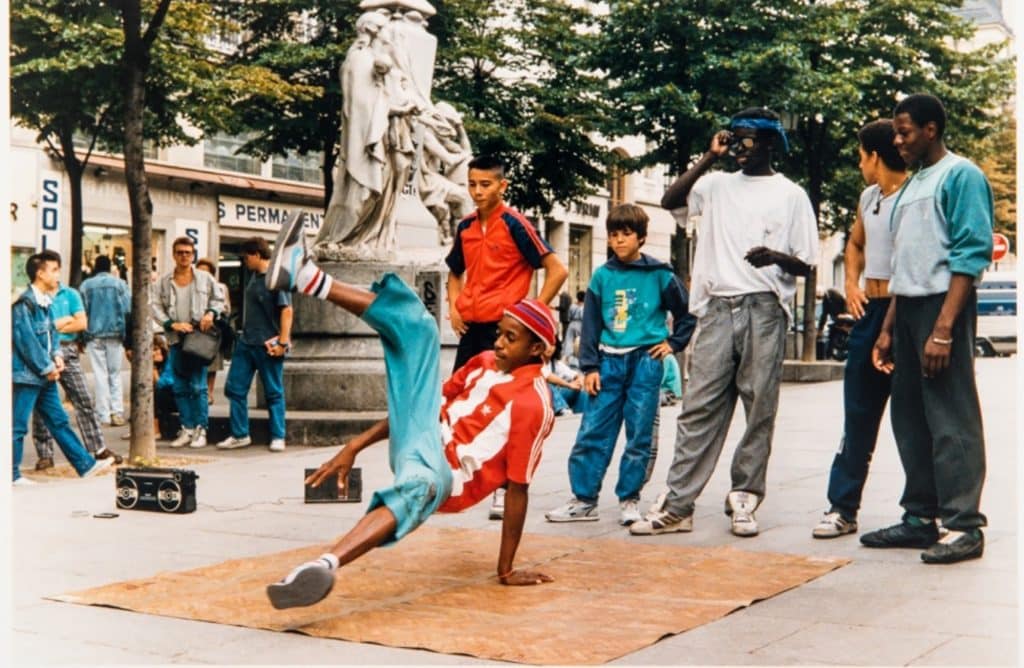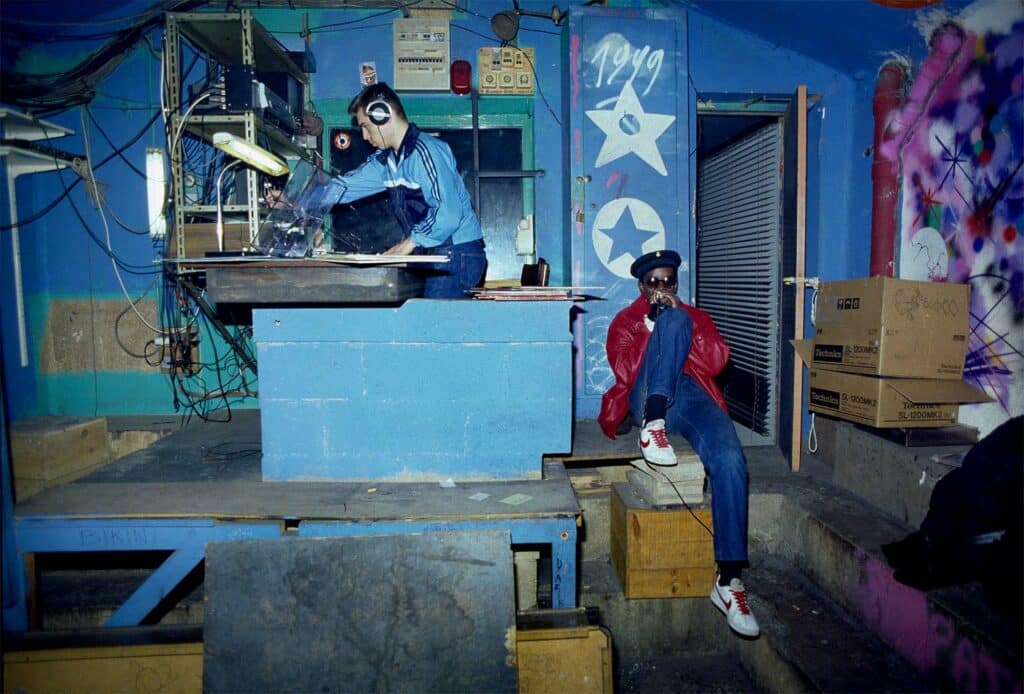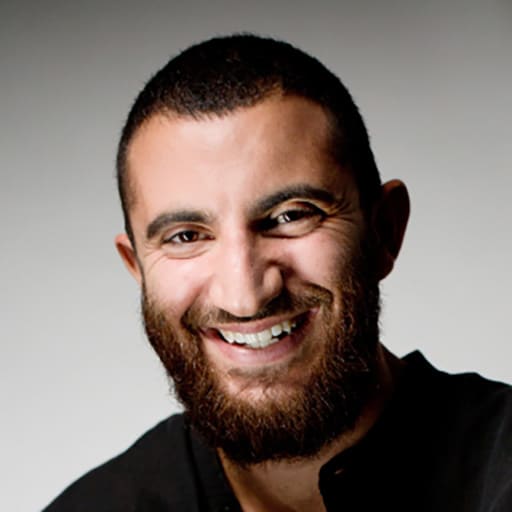No era-defining musical scene, movement, or style was ever created without photographers closely tracking the musicians: backstage, on stage, and during the afterparties. French hip-hop is no exception to the rule. The exhibition “Hip-hop 360: Gloire à l’art de rue”, on view at the Philharmonie de Paris, surveys the history of the genre in France, spotlighting the work of photographers. We take a closer look at three artists who immortalized the early days of French hip-hop.
Sophie Bramly

In the early 1980s, Sophie Bramly worked as a correspondent for a press agency in New York. She was bored with her work. One night, at a party in Union Square, she fell into the hip-hop culture. “I had a real epiphany when I saw these b-boys — the Rock Steady Crew, for sure. I had never seen bodies move like that! Then I discovered there was a whole culture and immersed myself in it.” She would rub shoulders with Zephyr, Futura 2000, Dondi, and Grand Mixer D.St., and spend every Friday night at the Roxy listening to sets by Afrika Bambaataa, who dubbed her the “Zulu Queen.”
Upon returning to Paris, she kept up with hip-hop, even though, she admits, the scene was less interesting than in the US. Sophie Bramly photographed afternoon dances at the Grange-aux-Belles, hosted by DJ Chabin who played the first rap records, as well as parties at the Bains-Douches. She reported the latest news to Sidney, a Radio 7 host and DJ, and an authentic hip-hop fan, who went on to host the famous H.I.P. H.O.P show on TF1. “The first time I found myself at the Radio France building, I was surprised to see b-boys practicing in the lobby. Most of the time, Sidney would have already had the record I was bringing back — even though it was no more than two or three days old — and I was very surprised by the way everyone knew the latest dance steps, the latest titles…” Sophie Bramly went on to host the show Yo on MTV Europe in London and has held various positions at record companies.
Marc Terranova

When Marc Terranova began his career as a mainstream press photographer in the 1980s, he decided to cover the emergence of hip-hop in Paris. From 1987 to 1989, he followed rap battles, graffiti performances, and breakdance competitions. A street photographer at heart, he created vivid, color-rich images that show hip-hop in all its diversity. Marc Terranova attended all the parties: “Chez Roger Boîte Funk at the Globo, a club at the Boulevard de Strasbourg, as well as at the Java. He photographed Destroy Man, Jhony Go, Spank, Solo, Flavor Flav of Public Enemy, and Dee Nasty behind their turntables or even at Radio Nova alongside Afrika Bambaataa. He attended breakdance sessions at the Trocadero as well as at the Sorbonne square. He followed graffiti artists on their outings. Unpublished and exhibited for the first time at the Philharmonie, his images are raw and capture the rough side of the movement’s early days.
Maï Lucas

First-generation French-Vietnamese, Maï Lucas immediately recognized herself in the spirit of hip-hop. At a very young age, she went out to the Globo and photographed her friends and her life. She befriended young musicians, graffiti artists, and dancers of all origins, pioneers of this culture made by and for the youth. Her work is a perfect blend of documentary and art photography, and her distinctive style makes the images instantly recognizable. They include the iconic portraits of Mc Solaar on the occasion of the release of his single Bouge de Là and of Joey Starr wielding an aerosol can. In an interview with Alexandra Boucherifi, the photographer said: “In the 1980s, when ip Hop first arrived in France, everything had to be created from scratch: a way of dancing, of dressing, of painting, of writing… It was also necessary to create a visual, photographic universe. […] I was only 18, but I knew I was building a photographic universe. I felt I had a mission, and because some of the people I photographed needed images, the work became something shared.” The invitation to exhibit her images at the Philharmonie was an opportunity to dive into her archives. Alongside the nineteen images presented in the exhibition, she has published Hip Hop diary of a fly girl 1986-1996 Paris with Éditions OFR. Straddling introspection and testimony, the book offers an intimate look at the origins of French hip-hop, highlighting the female protagonists with pictures of B-Love, K-reen, Sté Strausz, the Ladies Night, and the choreographer Max Laure.
« Hip-hop 360: Gloire à l’art de la rue » exhibition at the Philharmonie de Paris, 221 avenue Jean Jaurès, Paris 75019, until July 24, 2022.




